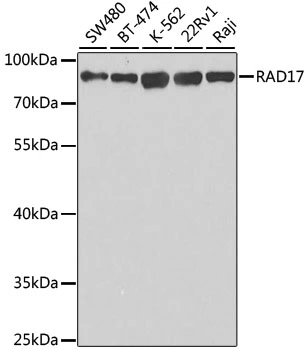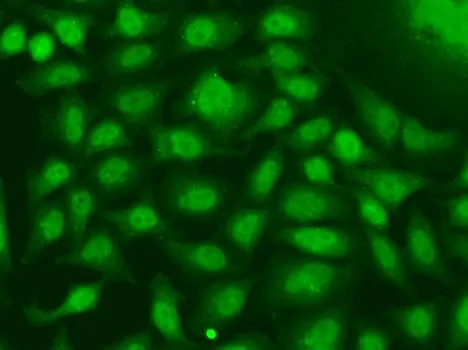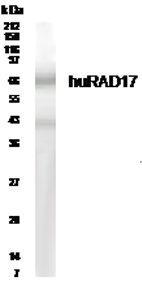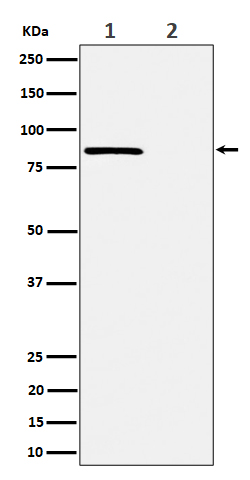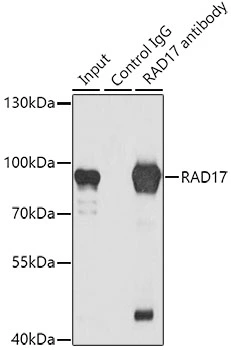
IP analysis of K562 cell lysate using GTX33453 Rad17 antibody. Antibody amount : 1microg / 200microg lysate Dilution : 1:1000
Rad17 antibody
GTX33453
ApplicationsImmunoFluorescence, ImmunoPrecipitation, Western Blot, ImmunoCytoChemistry
Product group Antibodies
TargetRAD17
Overview
- SupplierGeneTex
- Product NameRad17 antibody
- Delivery Days Customer9
- Application Supplier NoteWB: 1:500 - 1:2000. ICC/IF: 1:10 - 1:100. IP: 1:50 - 1:200. *Optimal dilutions/concentrations should be determined by the researcher.Not tested in other applications.
- ApplicationsImmunoFluorescence, ImmunoPrecipitation, Western Blot, ImmunoCytoChemistry
- CertificationResearch Use Only
- ClonalityPolyclonal
- ConjugateUnconjugated
- Gene ID5884
- Target nameRAD17
- Target descriptionRAD17 checkpoint clamp loader component
- Target synonymsCCYC, HRAD17, R24L, RAD17SP, RAD24, cell cycle checkpoint protein RAD17, RAD1 homolog, RAD17 homolog, RF-C activator 1 homolog, Rad17-like protein, cell cycle checkpoint protein (RAD17)
- HostRabbit
- IsotypeIgG
- Protein IDO75943
- Protein NameCell cycle checkpoint protein RAD17
- Scientific DescriptionThe protein encoded by this gene is highly similar to the gene product of Schizosaccharomyces pombe rad17, a cell cycle checkpoint gene required for cell cycle arrest and DNA damage repair in response to DNA damage. This protein shares strong similarity with DNA replication factor C (RFC), and can form a complex with RFCs. This protein binds to chromatin prior to DNA damage and is phosphorylated by the checkpoint kinase ATR following damage. This protein recruits the RAD1-RAD9-HUS1 checkpoint protein complex onto chromatin after DNA damage, which may be required for its phosphorylation. The phosphorylation of this protein is required for the DNA-damage-induced cell cycle G2 arrest, and is thought to be a critical early event during checkpoint signaling in DNA-damaged cells. Multiple alternatively spliced transcript variants of this gene, which encode four distinct protein isoforms, have been reported. Two pseudogenes, located on chromosomes 7 and 13, have been identified. [provided by RefSeq, Jul 2013]
- Storage Instruction-20°C or -80°C,2°C to 8°C
- UNSPSC12352203

